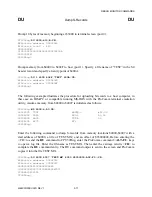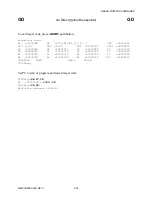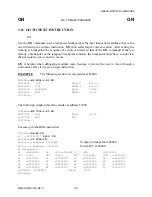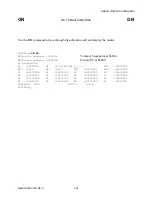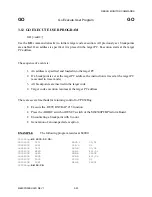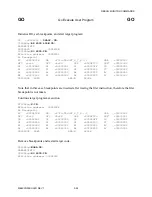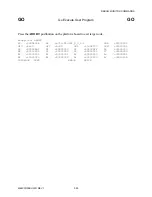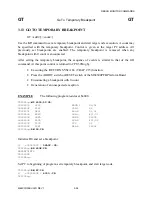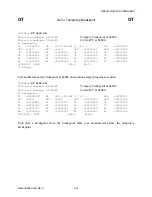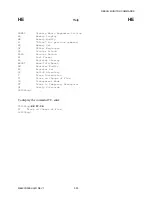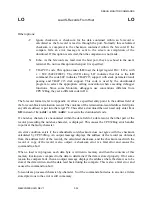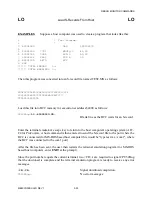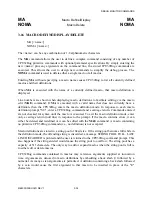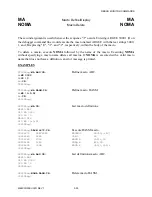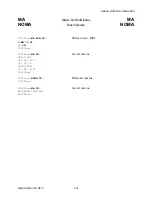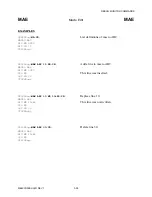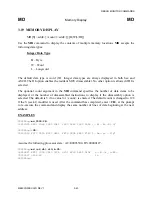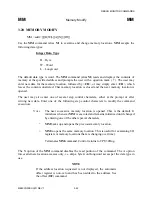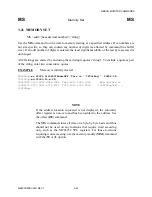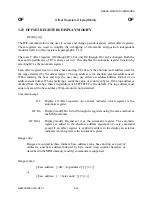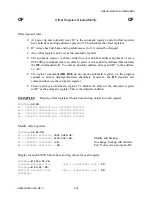
DEBUG MONITOR COMMANDS
M68CPU32BUG/D REV 1
3-31
LO
Load S-Records From Host
LO
3.15 LOAD S-RECORDS FROM HOST
LO [<port><del>][<addr>][;<X/-C/T>][=<text>]
Use the LO command to download a Motorola S-records format data file from a host computer
to the BCC. The LO command accepts serial data from the host and loads it into on-board
memory.
The optional port number allows the user to specify the download port. If this number is omitted,
the default is port 0.
The BCC default hardware configuration consists of one I/O port; P4 on the BCC or P9 on the
PFB. This limits the user to one host computer running a terminal emulation program. To send S-
records, the user must escape out of the terminal emulation program because the host computer
can not perform terminal emulation and send S-records at the same time. When the host is not in
terminal emulation mode, all status messages from CPU32Bug would be lost. Thus the user must
press <CR> twice after re-entering the terminal emulation program to signal CPU32Bug that
status messages can now be sent.
The optional <addr> field allows the user to enter an offset address. This offset address is added
to the address contained in the address field of each record which causes the records to be stored
in memory at a different location. The contents of the automatic offset register are not added to
the S-record addresses (see OF command). If the address is in the range $0 to $1F and the port
number is omitted, enter a comma before the address to distinguish it from a port number. Only
absolute addresses (i.e., "1000") should be entered, as other addressing modes cause
unpredictable results. An address is allowed here rather than an offset (expression) to permit
support for function codes (see paragraph 2.5).
The optional text field, entered after the equal sign (=), is sent to the host before CPU32Bug
begins looking for S-records at the host port. This allows the user to send a download command
to the host device. This text should NOT be delimited by quote marks. The text string begins
immediately following the equal sign and terminates with the carriage return. If the host is
operating full duplex, the string is echoed back to the host port by the host and appears on the
user’s terminal screen.
In order to accommodate host systems that echo all received characters, the above-mentioned text
string is transmitted to and received from the host one character at a time. After the entire
command is sent to the host, LO looks for a line feed (LF) character from the host, signifying the
end of the echoed command. No data records are processed until this LF is received. If the host
system does not echo characters, LO continues looking for an LF character before data records
are processed. In situations where the host system does not echo characters, it is required that the
first record transferred by the host system be a header record. The header record is not used, but
the LF after the header record serves to break LO out of the loop so data records are processed.
Содержание M68CPU32BUG
Страница 16: ...GENERAL INFORMATION M68CPU32BUG D REV 1 1 8 ...
Страница 30: ...DEBUG MONITOR DESCRIPTION M68CPU32BUG D REV 1 2 14 ...
Страница 102: ...DEBUG MONITOR COMMANDS M68CPU32BUG D REV 1 3 72 ...
Страница 168: ...DIAGNOSTIC FIRMWARE GUIDE M68CPU32BUG D REV 1 6 24 ...

